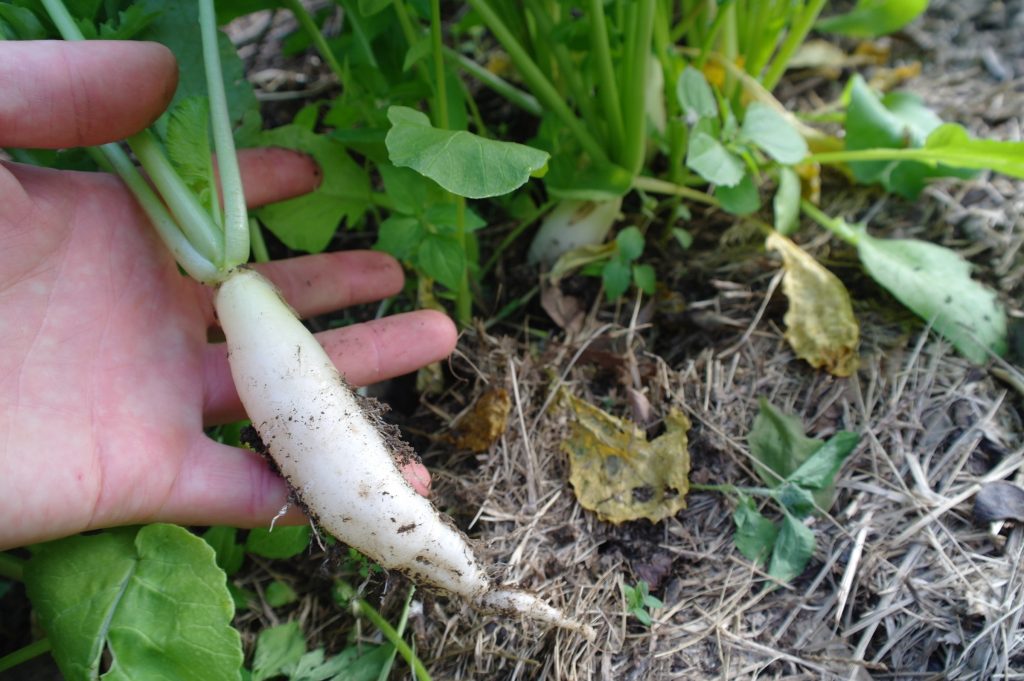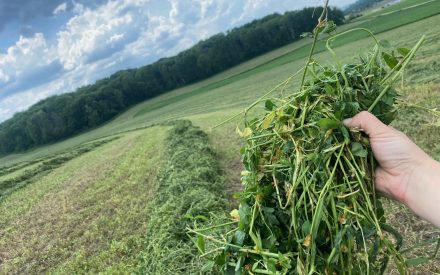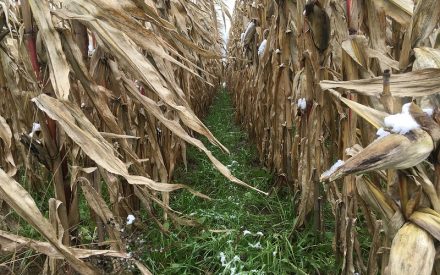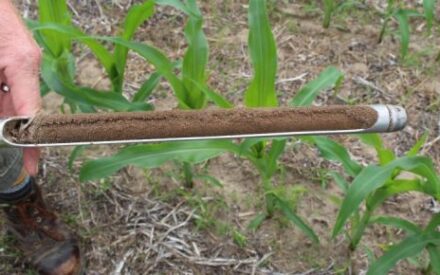General Comments
Radish (e.g., Tillage, Groundhog, Nitro, oilseed or forage radish) is a fast growing edible root vegetable capable of producing a girthy taproot that can extend several feet deep if planted in July or August. Daikon radishes selected as cover or forage crops are often touted to alleviate soil compaction by “bio-drilling” down through compacted layers within the crop root zone. Observations suggest, however, radish root growth can be restricted by compaction zones. Radish roots often follow the path of least resistance, finding an older root or earthworm channel (bio-pore), to navigate downward. This may, or may not, offer soil health benefits unique to radish (or other brassica) root growth. Observations also suggest the girthy growth of radishes can have a loosening effect at the soil surface which can cause conditions susceptible to gully erosion. It is, therefore, recommended to plant radish in combination with a cereal grain or a forage grass to help hold the soil.
Radishes, and other brassicas, release bio-toxic metabolites upon decomposition in soil, which have shown modest suppressive effects on certain weed, insect and parasitic nematode pests. These chemical compounds include glucosinolate and biologically active sulfur containing thiocyanates, which are also associated with the sulfurous odor given off by radishes during decomposition. Radishes have been shown to be good scavengers of residual soil nitrate. Radish will produce seed, causing a weed concern, if planted too early in the season (July). Radishes are fast growing with competitive, leafy top growth. Mixes must consider compatible species and modest radish seeding rates. Radish and radish mixtures require 40 to 60 lbs N from fertilizer, manure or legume credits.
Planting specifications
Seeding rate:
It is not recommended to seed radishes alone due to erosion concerns so these are recommendations for mixes
- Radish at 5 to 8 lbs per-acre + 30 lbs per-acre oats or spring barley.
- Radish, 5 to 8 lbs per-acre + 35 lbs field peas + 30 lbs per-acre oats or spring barley
- Radish, 5 lbs per-acre + 8 lbs berseem clover + 10 lbs annual ryegrass
Seeding depth: Drill 1/2″
Fertility needs: 40-60lbs of N
Management and termination
None needed, will winter kill in Wisconsin.
In a cover crop mix
Radishes are only recommended in mixes, seed seeding rates above.
Research in Wisconsin
Does Oilseed Radish Provide Nitrogen Credits? summarizes six site-years of data collected in east central Wisconsin and is developed to help growers better understand the limitations and benefits of growing oilseed radish in Wisconsin.


 Growing successful late-summer and spring planted forage crops
Growing successful late-summer and spring planted forage crops ▶ Watch: Considerations for Manure and Cover Crops Following Wheat
▶ Watch: Considerations for Manure and Cover Crops Following Wheat New Tool Helps Farmers Make Conservation Decisions
New Tool Helps Farmers Make Conservation Decisions Field Notes Episode 17: Notes on Using the Haney Test in Wisconsin
Field Notes Episode 17: Notes on Using the Haney Test in Wisconsin


